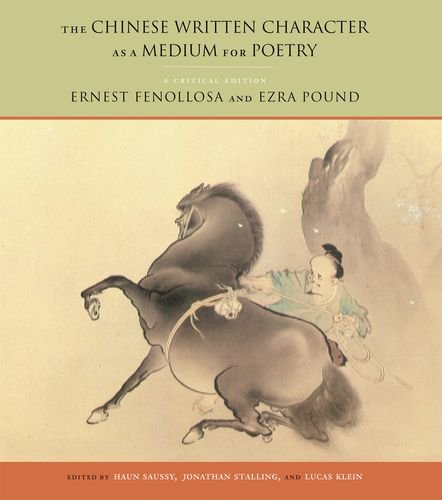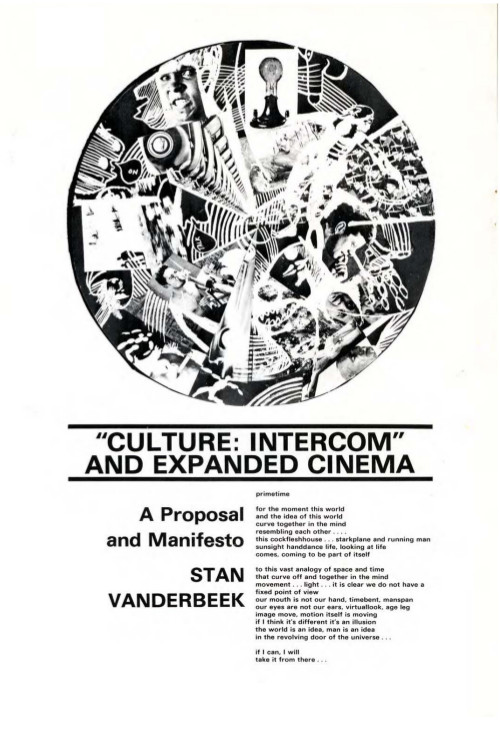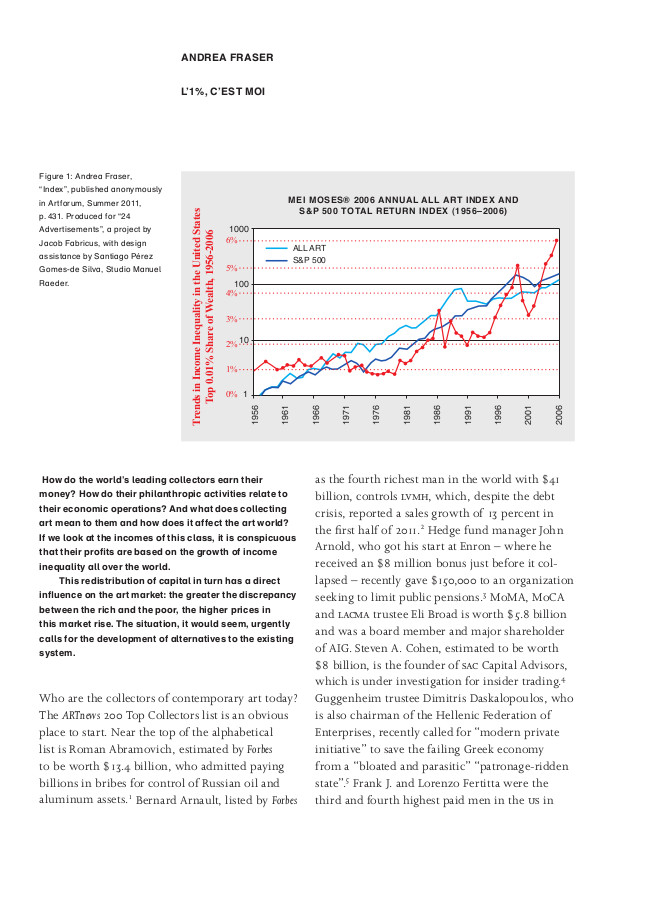Ernest Fenollosa, Ezra Pound: Chinese Written Character as a Medium for Poetry (1919–)
Filed under book, essay | Tags: · literature, poetics, poetry

“First published in 1919 by Ezra Pound, Ernest Fenollosa’s essay on the Chinese written language has become one of the most often quoted statements in the history of American poetics. As edited by Pound, it presents a powerful conception of language that continues to shape our poetic and stylistic preferences: the idea that poems consist primarily of images; the idea that the sentence form with active verb mirrors relations of natural force. But previous editions of the essay represent Pound’s understanding—it is fair to say, his appropriation—of the text. Fenollosa’s manuscripts, in the Beinecke Library of Yale University, allow us to see this essay in a different light, as a document of early, sustained cultural interchange between North America and East Asia.
Pound’s editing of the essay obscured two important features, here restored to view: Fenollosa’s encounter with Tendai Buddhism and Buddhist ontology, and his concern with the dimension of sound in Chinese poetry.
This book is the definitive critical edition of Fenollosa’s important work. After a substantial Introduction, the text as edited by Pound is presented, together with his notes and plates. At the heart of the edition is the first full publication of the essay as Fenollosa wrote it, accompanied by the many diagrams, characters, and notes Fenollosa (and Pound) scrawled on the verso pages. Pound’s deletions, insertions, and alterations to Fenollosa’s sometimes ornate prose are meticulously captured, enabling readers to follow the quasi-dialogue between Fenollosa and his posthumous editor. Earlier drafts and related talks reveal the developmentof Fenollosa’s ideas about culture, poetry, and translation. Copious multilingual annotation is an important feature of the edition.”
Critical edition
Edited by Haun Saussy, Jonathan Stalling, and Lucas Klein
Publisher Fordham University Press, 2008.
ISBN 0823228681, 9780823228683
240 pages
Reviews: Armstrong (Sign Language Studies, 2009), Nicholls (Modernism/modernity, 2010), Beam (Oyster Boy Review, 2012).
Commentary: Williams (2009).
Publisher (2008)
Fenollosa’s documents in the Beinecke Library.
Version published in The Little Review, 1919: 6:5 (Sep 1919), 62-64, 6:6 (Oct 1919), 57-64, 6:7 (Nov 1919), 55-60, 6:8 (Dec 1919), 68-72 (at Index of Modernist Magazines).
Version printed in Instigations, 1920, 357-388 (at Internet Archive), HTML (at Project Gutenberg).
Critical edition, 2008: EPUB.
Stan VanDerBeek: “Culture: Intercom” and Expanded Cinema: A Proposal and Manifesto (1966)
Filed under essay | Tags: · art, cinema, expanded cinema, image

“It is imperative that we (the world’s artists) invent a new world language … that we invent a non-verbal international picture-language … I propose the following:
That immediate research begin on the possibility of an international picture-language using fundamentally motion pictures.
That we research immediately existing audio-visual devices, to combine these devices into an educational tool, that I shall call an ‘experience machine’ or a ‘culture-intercom’ …
The establishment of audio-visual research centers … preferably on an international scale … These centers to explore the existing audio-visual hardware.
The development of new image-making devices … (the storage and transfer of image materials, motion pictures, television, computers, video-tape, etc. …) In short, a complete examination of all audio-visual devices and procedures, with the idea in mind to find the best combination of such machines for non-verbal inter-change.
The training of artists on an international basis in the use of these image tools.
The immediate development of prototype theatres, hereafter called ‘Movie-Dromes’ that incorporate the use of such projection hardware. The immediate research and development of image-events and performances in the ‘Movie-Drome’. … I shall call these prototype presentations: ‘Movie-Murals’, ‘Ethos-Cinema’, ‘Newsreel of Dreams’, ‘Feedback’, ‘Image libraries’ … [..] When I talk of the movie-dromes as image libraries, it is understood that such ‘life-theatres’ would use some of the coming techniques (video tape and computer inter-play) and thus be real communication and storage centers, that is, by satellite, each dome could receive its images from a world wide library source, store them and program a feedback presentation to the local community that lived near the center, this newsreel feedback, could authentically review the total world image ‘reality’ in an hour long show that gave each member of the audience a sense of the entire world picture …
‘Intra-communitronics’, or dialogues with other centers would be likely, and instant reference material via transmission television and telephone could be called for and received at 186,000 m.p.s. … from anywhere in the world. Thus I call this presentation, a ‘newsreel of ideas, of dreams, a movie-mural’. An image library, a culture de-compression chamber, a culture inter-com.” (from the manifesto)
Published in Film Culture 40 (Spring 1966), pp 15–18; Motive, November 1966, pp 13–23; and The Tulane Drama Review 11:1 (Autumn 1966), pp 38–48.
via StanVanderbeek.com
PDF (all three versions in a single PDF)
Comment (0)Andrea Fraser: L’1% C’est Moi (2011–) [EN, ES]
Filed under essay | Tags: · art, contemporary art, institutional critique, market, money

Andrea Fraser’s essay “L’1% C’est Moi” focuses on the direct relationship between art-market trends and income distribution. The essay’s title refers to the statement “l’état, c’est moi” (“the state, it is me“), attributed to Louis XIV and often evoked to illustrate the principle of absolute monarchy, as well as to Gustave Flaubert’s famous remark, “Madame Bovary, c’est moi.”
“How do the world’s leading collectors earn their money? How do their philanthropic activities relate to their economic operations? And what does collecting art mean to them and how does it affect the art world? If we look at the incomes of this class, it is conspicuous that their profits are based on the growth of income inequality all over the world.
This redistribution of capital in turn has a direct influence on the art market: the greater the discrepancy between the rich and the poor, the higher prices in this market rise. The situation, it would seem, urgently calls for the development of alternatives to the existing system.” (from the essay)
First published in Texte zur Kunst 83, Berlin, September 2011, pp. 114-127
7 pages
There’s No Place Like Home, another essay by the author, contribution to Whitney Biennial 2012
Art and Money by William N. Goetzmann, Luc Renneboog, Christophe Spaenjers (2010)
English: PDF, PDF
Spanish: PDF, PDF (trans. 2016, added on 2016-12-18)

